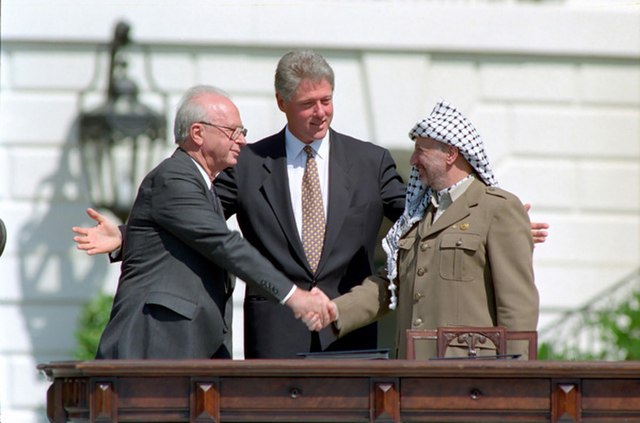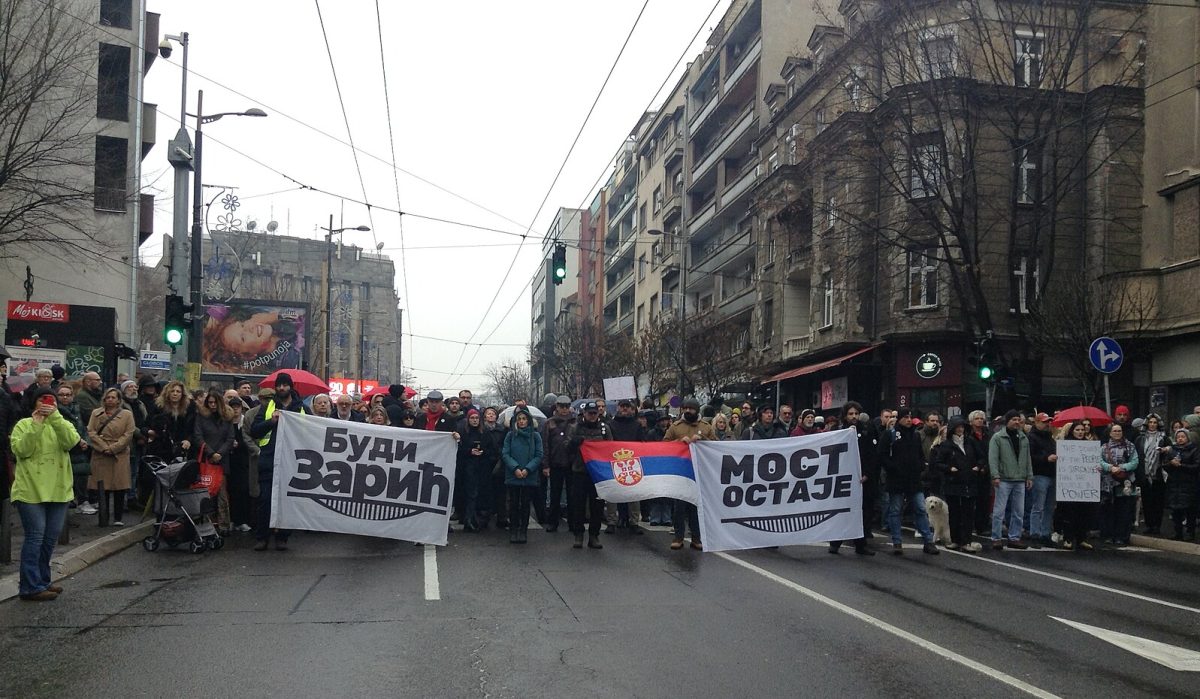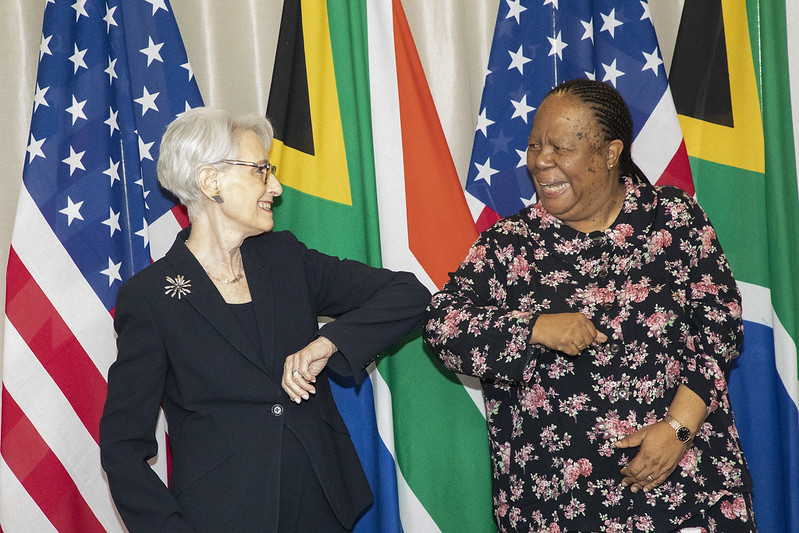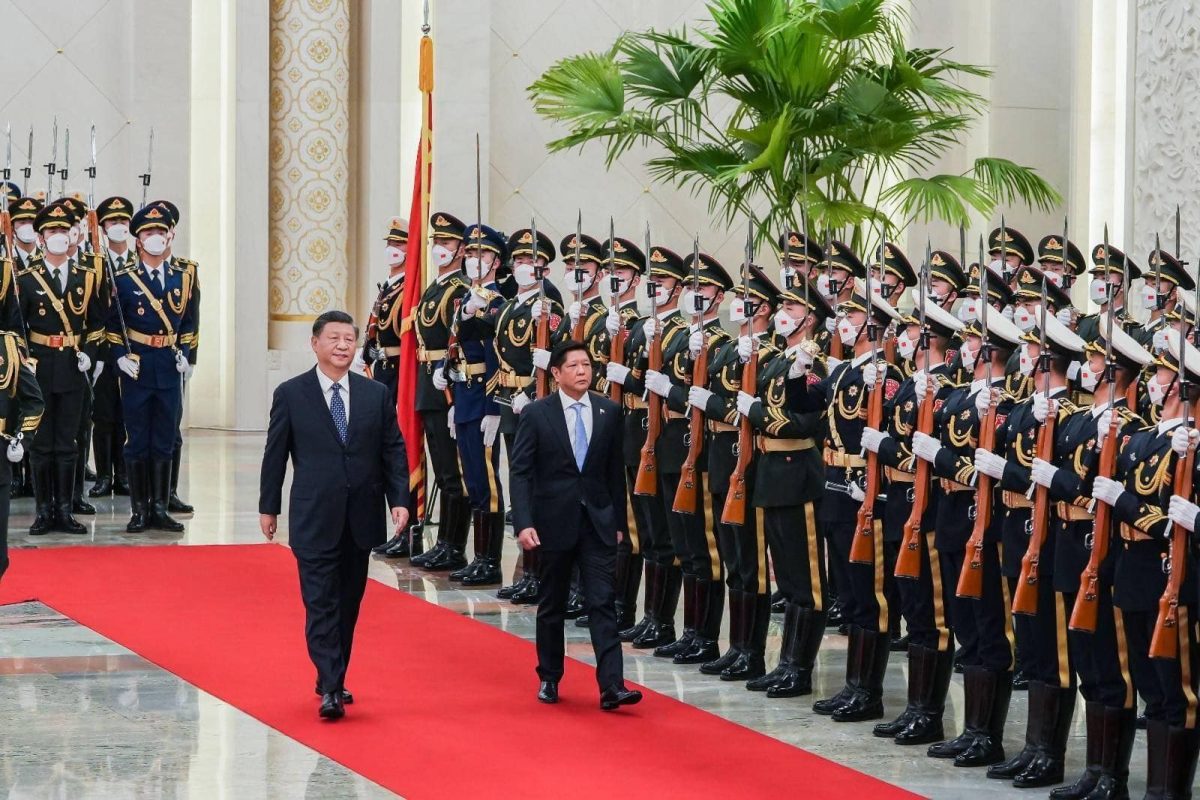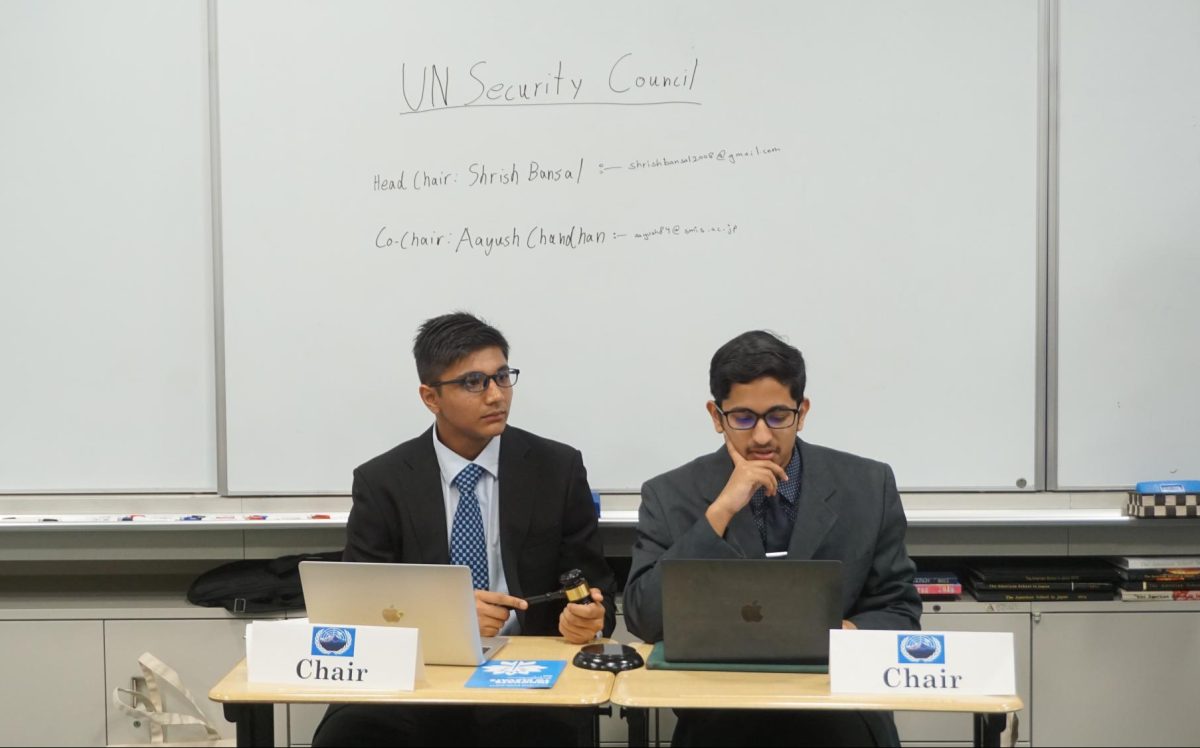It’s 2024, and global tensions are at their highest levels since World War 2. European countries are ramping up arms production, extremism in the Middle East is expanding, and in Asia, militaries are expanding and modernizing. What is happening in different areas of the world, what historical causes are there to explain it, and how could a series of global conflicts affect our lives? Those are some of the questions answered in this multi-part series of articles. This installment will focus on the history of conflicts, tensions, and future possibilities in the Middle East, as well as some of its global ramifications.
SECTION 1: Instability and Intervention
More than anywhere else in Asia, the Middle East was probably the most conflict-fraught part of the world during the late 20th and 21st centuries. To understand the roots of the current-day conflicts, it is important to consider the historical backgrounds of each of the various players in the region.
The Arab-Israeli Wars
In 1948, the modern state of Israel was founded in the land of Palestine. On the same day as their proclamation as a country, on May 15th, they came under attack from an Arab coalition made up of Egypt, Lebanon, Syria, Jordan, and Iraq. The fledgling Israeli Defense Force (IDF) would repulse the offensive and end the conflict, having expanded their territories.
Soon after, the Egyptians nationalized and blockaded the Suez Canal, a major artery of global trade. This prompted an intervention by the British, French, and Israelis, invading Egypt to retake control over the canal. This would be successful, though it strained Arab-Israeli relations further.
Israel came into conflict with their neighbors on several other occasions, like the Six-Day War and Yom Kippur War. Israel came out of these conflicts, having gained more territory in the Golan Heights —an area southwest of Syria— and around the Suez Canal.
Thereafter, formal peace treaties between the Egyptians/Jordanians and Israel in 1978 and 1995, respectively, brought a period of relative peace to Arab-Israeli relations.
Furthermore, the signing of the Oslo Accords in 1993 and 1995 diminished tensions between Israel and Palestine, setting the stage for further peace talks.
The Yemeni Civil War
In 1962, war raged between North and South Yemen in the North Yemen Civil War. The two countries would often fluctuate between war and peace, even starting the South Yemen Civil War. Eventually, North and South Yemen came to a ceasefire and united in 1990.
The country still suffers from instability; It suffered a civil war in 1994 caused by the marginalization of Southern Yemen as well as political violence targeted at the left. The conservative North won, eliminating socialists in Yemen, though the ensuing repression and resentment would set the stage for the Houthi takeover in 2014.
The Iranian Revolution
In 1979, Iran underwent a revolution, forcefully replacing an autocratic pro-American monarchy led by the Shah with a theocratic Shi’a Islamic government led by Ruhollah Khomeini. A year after the revolution, Iraq invaded Iran, citing the Shi’a government as a threat to their majority Sunni population.
The war was inconclusive, cementing the clash between the two sects of Islam: Shi’a and Sunni. Though a ceasefire was brokered following the conflict, peace talks stalled and were abandoned as Iraq continued militarization under Saddam Hussein.
The conflict intensified in 1990 when Iraq invaded Kuwait, a small but wealthy oil-producing neighbor of Iraq. In response, the United States formed a global coalition and initiated a combined warfare campaign against Iraqi forces in Kuwait in 1991. The Gulf War was quick and decisive, lasting a little over a month and ending in the liberation of Kuwait.
SECTION 2: Insurgency and Counterterrorism
After 9/11, much would change in the Middle East. Conflicts emerged from dispersed insurgencies like Al Qaeda and ISIS, and the strategies used by the US and its allies to combat them vastly changed.
The Global War on Terror
On September 11, 2001, two hijacked airliners were piloted to crash into the World Trade Center in New York. Osama Bin Laden, the leader of a terrorist group called Al-Qaeda, orchestrated the attack. From here, the US would wage a War on Terror against Al-Qaeda and other terrorist cells, primarily in the Middle East—notably Iraq and Afghanistan. The Northern Alliance, a prominent group consisting of various anti-Taliban ethnic and political groups in Afghanistan, collaborated with the US in these attacks.
The War on Terror lasted from 2001 to 2021 when the US Military pulled out of Afghanistan.
The first major combat operation of the war was in Afghanistan in 2001, working with the Afghan government to destroy contingents of Al-Qaeda as well as the Taliban. While this worked initially, with the fall of the Taliban marked in December, the Taliban would regroup in Pakistan and re-engage American forces in a guerilla-style war. This would last until the American withdrawal.
In 2003, the US started the invasion of Iraq, citing claims of the Iraqis possessing weapons of mass destruction as a justification for the invasion. Later that year, the government led by Saddam Hussein collapsed, with no weapons of mass destruction ever being discovered.
Counterinsurgency
From there, the War in Iraq turned into an insurgency, with various militant groups rising to fill the power vacuum left by the collapse of the government. The insurgencies were never entirely defeated, with a moderate contingent of American troops still being stationed in the country to this very day.
In 2002, the Pakistani government began open cooperation with the US to rid the country of militant Islamic extremists. They arrested several high-ranking members of such organizations and allowed the US to use the country as a staging point for drone strikes and assassination operations.
One of such operations was conducted on May 2, 2011. The raid, conducted in Abbottabad, Pakistan, would lead to the death of Osama Bin Laden, as well as his wife and son.
The Islamic State originated from Iraqi jihadists and became a transnational Salafi jihadist group intent on establishing a caliphate (Islamic Empire ruled on Sharia law). There are several branches of the Islamic State, such as ISIS, meaning the Islamic State of Iraq and Syria. In 2014, Operation Inherent Resolve was started, a campaign focused on curbing the influence of the Islamic State in Iraq, Syria, and Libya. On all three fronts, the Islamic State would be defeated, being forced out of each country. By 2019, the Islamic State had lost all land in the Middle East, forcing it to set its sights on Africa and elsewhere.
Skirmishes in Gaza
In 2007, Hamas, an Islamic militant group, came to power in Gaza, Palestine. The two opposing sides, Israel and Hamas, would go to war a total of 5 times, with peace talks being abandoned in 2014.
SECTION 3: Current Conflict
Open War in Gaza/Lebanon
On October 7th, 2023, Hamas initiated a large offensive into Israel, with mass rocket barrages and a ground invasion. Over 1,100 people were killed, and 250 were taken as hostages. From there, Israel started a major ground invasion of Gaza to retrieve the hostages. The war has caused the death of over 40,000 Palestinians.
As of the time of writing, Israel has continued its advances and has recently announced its victory over Hamas forces in Rafah, solidifying their control over the border between the Gaza Strip and Egypt.
The Lebanese militant group Hezbollah has also been the target of several recent strikes as well. Senior military officials of Hezbollah have been targeted and killed by the IDF, with a lot of collateral damage.
Recently, many handheld devices exploded across Lebanon, with many Hezbollah members using those same devices. Over 32 people have been killed, with the simultaneous explosions injuring thousands. CNN reports this attack as a joint operation between the Israeli intelligence service and its military, though Israel has made no public statement. The explosions likely resulted from supply-chain interference, likely having small explosive devices built into the pagers and simultaneously denoted with a radio signal.
The Yemeni Civil War / Houthi Attacks and American Retaliation in the Red Sea
In 2014, an open civil war erupted in Yemen between the Houthis and the Yemeni Government after the Houthis seized the Yemeni capital of Sanaa. The Houthis are a faction situated in Northern Yemen, having conducted a low-level insurgency for the past several years.
Since 2014, the civil war has continued to rage on in the country, with no side gaining a clear upper hand. With the Houthis being allied to Hamas, once the Israeli-Hamas war started, they began attacking merchant vessels in the Red Sea.
Since the initiation of hostilities, over 40 vessels in the Red Sea have been attacked by Houthi drones and missiles.
In response to the open Houthi aggression, the US launched Operation Prosperity Guardian, the creation of a naval task force situated in the Red Sea to defend civilian vessels from attack. Additionally, the US began the targeting and striking of inland targets, like missile sites.
In late January, the US launched a mass missile strike against targets in Iraq and Syria in response to the deaths of three Americans killed by a drone strike in Jordan. An Iranian-backed militant group conducted the drone strike and the US targeted facilities used by Iranian-backed groups within Iraq and Syria.
Currently, the Houthis continue their sporadic attacks on civilian vessels and military targets, though the intensity is much less than it was at the start of hostilities. Still, there are major concerns over an abandoned and burning oil tanker stranded in the Red Sea, citing potentially massive ecological damage as a result of the 1,000,000 barrels of crude oil within the ship.
The Bigger Picture
Expanding our perspective, we see a larger proxy war at play between Israel and Iran since the start of the war between Israel and Hamas.
Hamas is an organization partly funded by Iran, and Hezbollah, a militant group located in Lebanon, is an Iranian proxy. Furthermore, the aforementioned Houthis received military personnel from Iranian proxies to aid their strikes on vessels in the Red Sea.
Throughout the conflict, both Israel and Iran attacked each other directly, with Israel bombing the Iranian Embassy in Syria, as well as mass rocket/missile strikes by Iran and its proxies and retaliatory strikes by Israel.
Throughout the 2024 summer and to this day, Israel and Hezbollah exchanged missile strikes. On September 11th, Israel claims to have attacked 30 targets in Lebanon. Well over 9,600 attacks have been made in total by both sides, and that number is only increasing.
SECTION 4: The Future
The Red Sea Crisis with the Houthi attacks is continuing as Iranian aid continues to be funneled into Yemen. Operation Prosperity Guardian, a military coalition effort led by the US to halt Houthi actions, is still ongoing, with sporadic strikes made by the US Navy and other Navies in retaliation to continued Houthi attacks.
All of this would only exacerbate the proxy war being fought between Iran and the US/Israel. The continuation of this proxy war would most likely mean the continued presence of organizations being funded by the Iranians, taking strong stances against American and Israeli influence in the region.
With the state of Israel continuing their offensives in Gaza, there is no doubt that the war will continue. The humanitarian situation in Gaza continues to be dire, and it is difficult to predict how Israel and the global community will deal with the situation.
In August, Qatar and Egypt organized peace talks between Israel and Palestine. This is a valuable sign that both sides are willing to make peace, though the negotiations fell through after neither side could accept the proposals being made.
Thus, the possibility of a ceasefire both in Gaza and the Red Sea should never be put out of the question, however unfixable the situation may seem.

